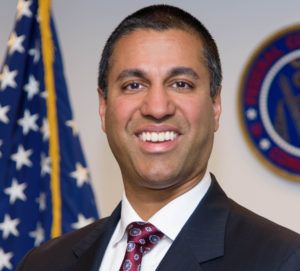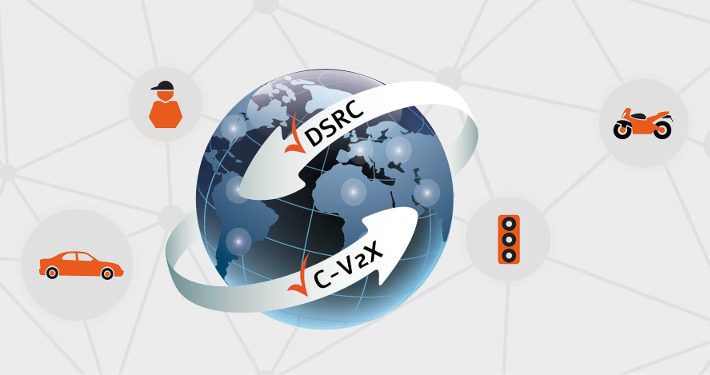Numerous transportation and automotive organisations in the USA have expressed their displeasure of the proposals advanced by the Federal Communications Commission’s (FCC) chairman, Ajit Pai, to give away spectrum that has been previously set aside for life-saving communications between vehicles and other users.
In 1999, the FCC allocated 75 megahertz of spectrum in the 5.9GHz band for Dedicated Short-Range Communications (DSRC) services that would be used for road safety through Vehicle-to-Everything (V2X) technologies. Citing a lack of deployment and the application of the technology as being a ‘promise unfulfilled’, Pai proposes to make available the lower 45MHz of the band for unlicensed uses such as WiFi and allocate the upper 20MHz for new Cellular Vehicle-to-Everything (C-V2X) automotive communications technology. He also proposes seeking public input on whether to allocate the remaining 10MHz in the band to C-V2X or DSRC. The FCC will vote on this Notice of Proposed Rulemaking at its December 12 meeting.
The Alliance of Automobile Manufacturers (AAM) and ITS America have been joined by seven other organisations, including the American Automobile Association, American Association of State Highway and Transportation Officials (AASHTO), American Trucking Associations, Association of Global Automakers, League of American Bicyclists, Motor & Equipment Manufacturers Association, and the National Federation of the Blind, have issued a joint statement on the importance of preserving the Road Safety Spectrum for V2X technologies. Noting that V2X technologies are already being deployed in more than half of the USA’s states and dozens of cities for the purposes of improving road safety, the group requests that the FCC refrain from finalizing any action related to sharing of safety-critical spectrum for non-safety-related purposes until test results clearly indicate that sharing with unlicensed devices can occur without harmful interference to the incumbent technologies.
 ITS America’s president and CEO, Shailen Bhatt, said, “In a country that reels from nearly 36,000 roadway deaths every year, it is unfathomable that the USA would literally give away our top safety tool, and with it, our best chance to save tens of thousands of lives. The FCC is prepared to trade safer roads for more connectivity by giving away much of the 5.9GHz safety spectrum, and it proposes to make such an inexplicable decision in the absence of data. The Commission is prepared to put not just drivers but pedestrians and other vulnerable users, particularly first responders and those in work zones, at grave risk, and for what? It comes down to priorities; we can save and protect people’s lives, or we can ensure its easier to place online orders from our cars. The choice is clear, safety always wins.”
ITS America’s president and CEO, Shailen Bhatt, said, “In a country that reels from nearly 36,000 roadway deaths every year, it is unfathomable that the USA would literally give away our top safety tool, and with it, our best chance to save tens of thousands of lives. The FCC is prepared to trade safer roads for more connectivity by giving away much of the 5.9GHz safety spectrum, and it proposes to make such an inexplicable decision in the absence of data. The Commission is prepared to put not just drivers but pedestrians and other vulnerable users, particularly first responders and those in work zones, at grave risk, and for what? It comes down to priorities; we can save and protect people’s lives, or we can ensure its easier to place online orders from our cars. The choice is clear, safety always wins.”
Jeffrey F Paniati, ITE executive director and CEO, said, “ITE and its members are committed to saving lives and achieving the goals of Vision Zero. Reallocation of this spectrum is a short-sighted move that will significantly reduce the life-saving potential of connected and automated vehicles.”
However, a different perspective is offered by the international cross-industry organisation of automotive, technology, and telecommunications companies that are promoting the use of cellular-based V2X systems. The 5G Automotive Association’s (5GAA) statement says, “We applaud Chairman Ajit Pai for proposing to dedicate a portion of the automotive safety spectrum for the use of C-V2X. Extensive crash avoidance testing continues to demonstrate that C-V2X technology will deliver safety benefits to the American public. We look forward to working with all stakeholders throughout this process to ensure that spectrum regulations adequately address the needs of transportation safety.”





